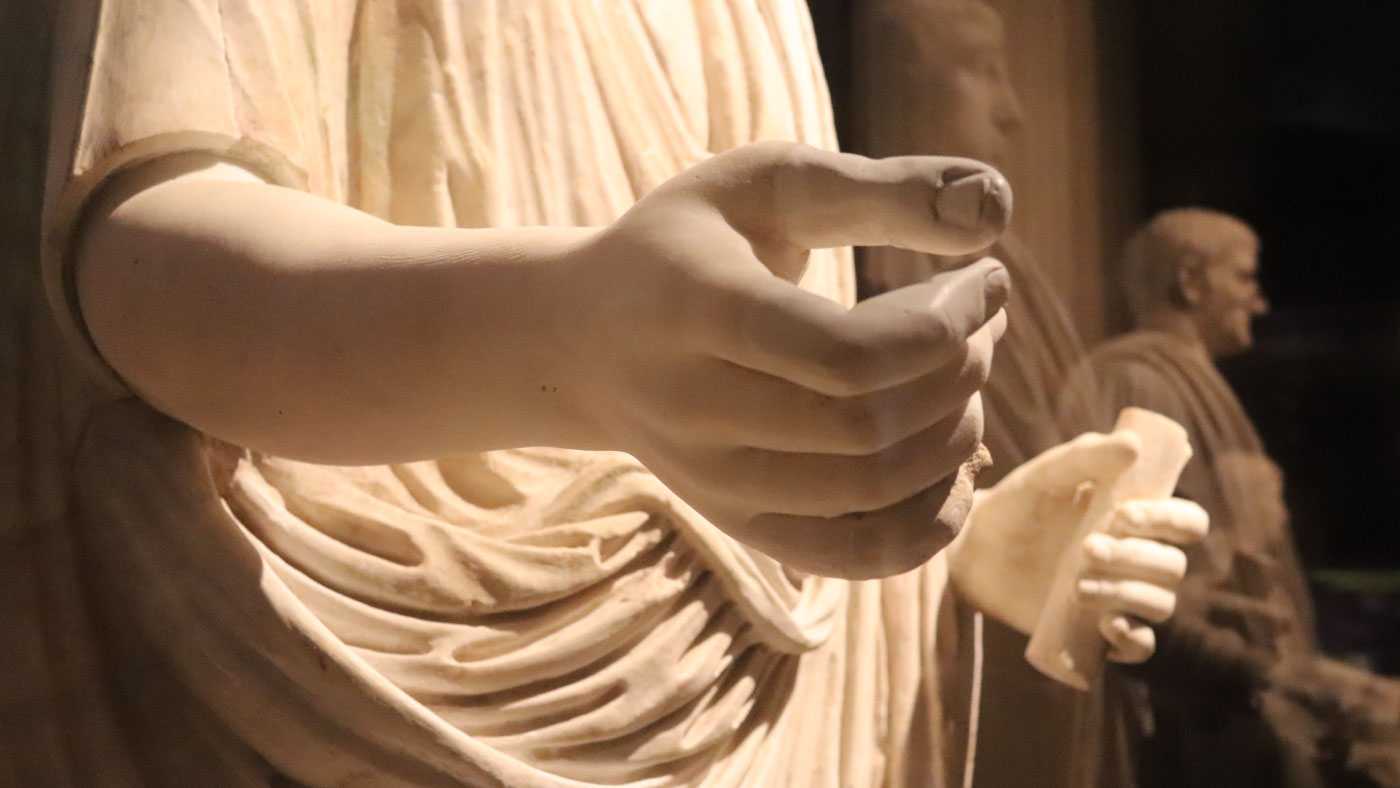Pompeii Lecture Series: The Beginning of Christianity in the Center of the Roman Empire
Over a century and a half ago, in the 1860s, a curious inscription was found among the ruins of Pompeii.
It was a little slice of life, a graffito left behind in the first century. But there was a particular word that caught the imaginations of archaeologists, religious scholars, and others – Christianos.


This was proof, the argument went, that early Christians were present in Pompeii by the time Vesuvius erupted. Some experts went so far as to call the place where the scribbles were found the Hospitium Christianorum, the “hotel of the Christians” where worshippers may have met. But as BYU ancient scripture expert Matthew Grey told The Leonardo guests last week, the real story is more complicated than that.
Finding out when and where particular cultures appeared, and how they spread, is a complicated task. In the case of early Christianity, it’s not always clear how the belief system took root in different counties. When the religion appeared and became established in various places is pieced together from scraps of evidence that are often difficult to interpret. In the case of early Christians and Rome, Grey said, experts have gone back and forth between suggesting a vibrant Christian community in Pompeii to none at all. Grey and some colleagues suggest something in the middle.
Some supposed items of Christian ephemera, such as a potential indentation of a cross on a wall found in Pompeii, have turned out to be misinterpreted. In that case, the “cross” is most likely an indentation left by a bookshelf. That fits with the idea that first century Christians generally did not use a crucifix as an iconic symbol. And while the famous Christianos graffiti does have something to say about the religions of the time, it’s in a different way than earlier experts speculated.
The actual graffito is long gone, Grey said, as exposure to the air eventually destroyed the writing. But working from transcriptions and drawings of the text, Grey and colleague Thomas Wayment proposed that the graffito includes the line “Bovios is listening to the Christians.” This squares a little better with other details of the hotel, such as depictions of Roman household gods and being across the street from a brothel. The graffito was not a sign of worship. It may have been teasing someone named Bovios for spending some time entertaining Christianity.
At present, the trail goes cold from there. Perhaps Bovios was being made fun of for associating with early Christians, a group that intentionally set themselves apart but were also looked down upon by Roman polytheistic society. It’s also unknown what Bovios’ interaction was – whether it happened in Pompeii, at some other place, and when the exchange happened. At the very least, though, the ancient scrawl is a small signal that word of Christianity was spreading through Rome in the years prior to the devastation inflicted by Vesuvius, a contrast between an ancient cultural minority and the majority it would someday become.
Want to know more? We have five lectures left in our free Pompeii series! Check out our website to RSVP or get more information.
Our free lecture series is supported through a ZAP grant.

